Abstract
Twenty-seven patients requiring massive transfusions were studied prospectively to determine whether administration of stored, modified whole blood induced a primary disorder of hemostasis evidenced by generalized microvascular oozing. Platelet counts fell in proportion to the number of units of blood transfused. In contrast, the levels of factors V and VIII correlated poorly with the units of blood transfused, 85% of the total variation in the levels being due to influences other than transfused blood. Levels of all other clotting factors were unrelated to the number of units of blood given. Eight patients developed abnormal bleeding. The cause appeared to be dilutional thrombocytopenia in five patients, and DIC in three. In six of the eight, bleeding was controlled with platelet concentrates alone. Two patients were given cryoprecipitate also. The most useful laboratory test for predicting abnormal bleeding was the platelet count. Fibrinogen levels should be followed as an aid in the diagnosis of DIC. The BT, PT, and PTT were not helpful in assessing the cause of bleeding, unless they were greater than 1.5 times the control value. We recommend that any patient receiving massive transfusions who develops diffuse microvascular bleeding be given platelet concentrates. Platelet counts as high as 100,000 may be required to control bleeding from surgical wounds. It is not necessary to supplement transfusions of stored, modified whole blood with fresh blood or fresh frozen plasma.
Full text
PDF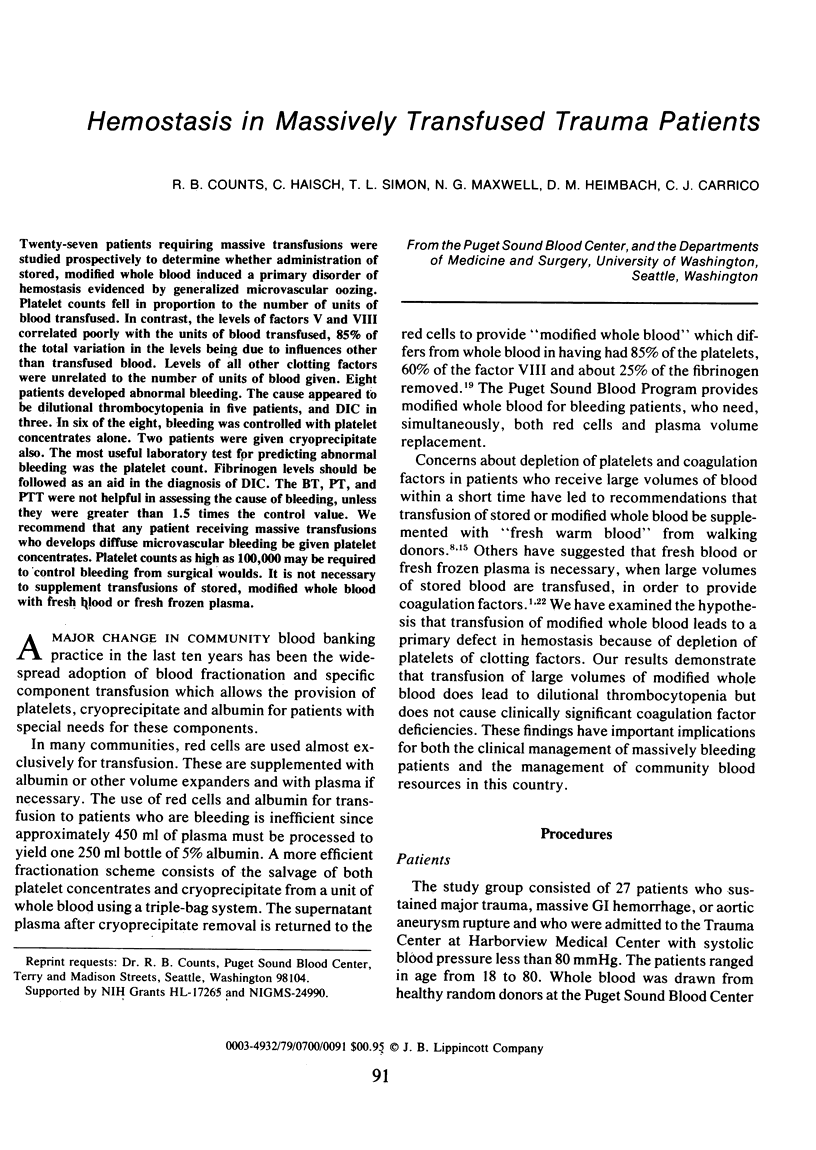

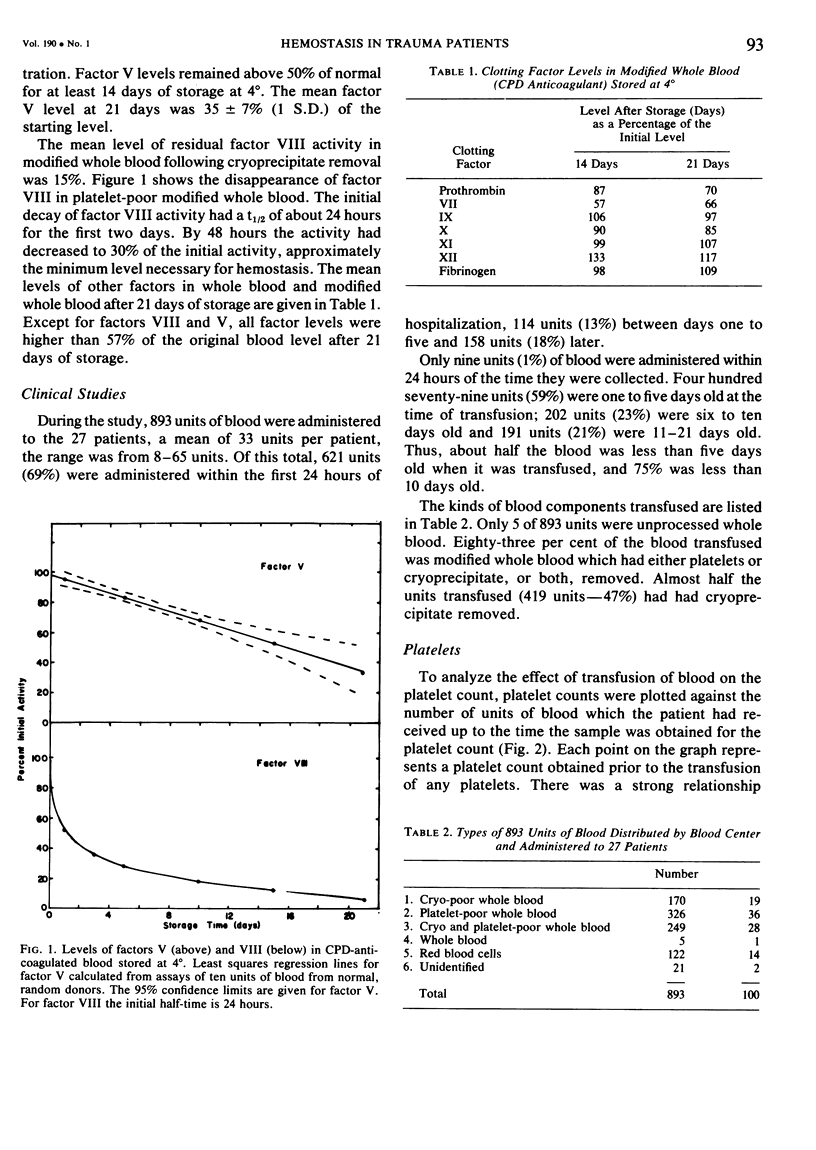
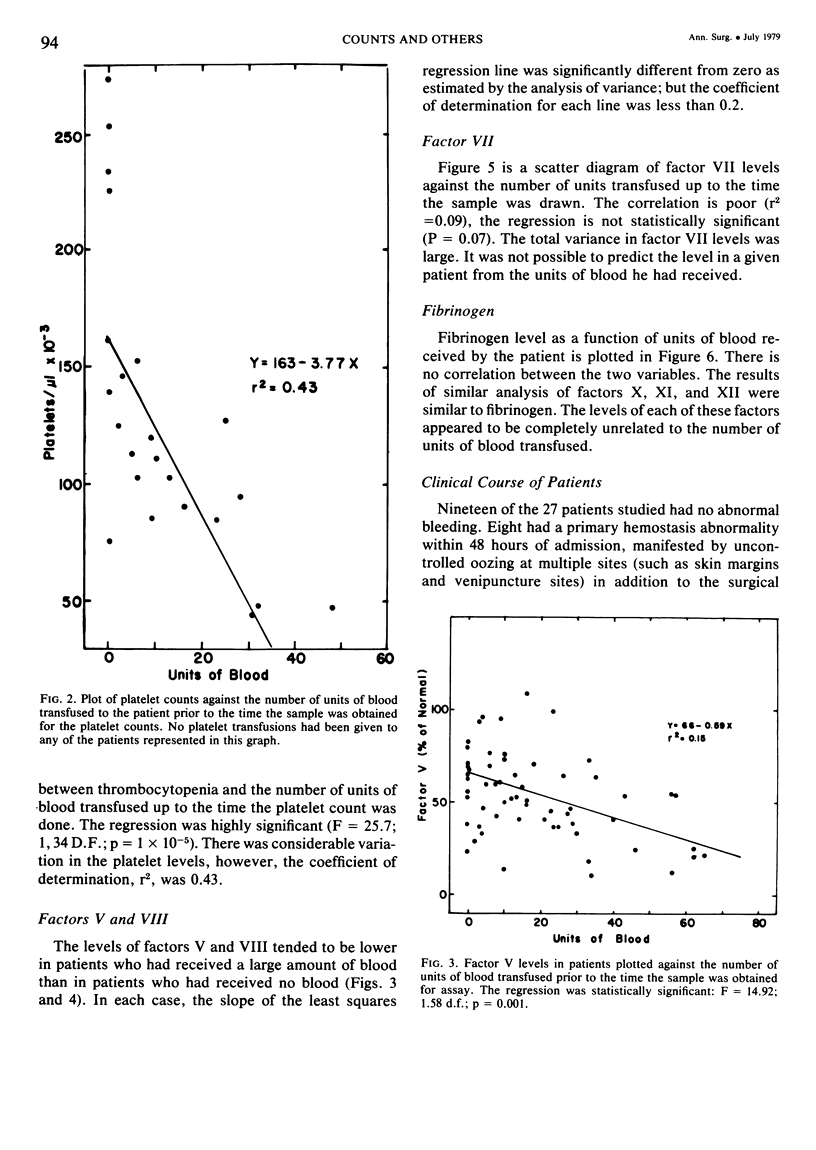
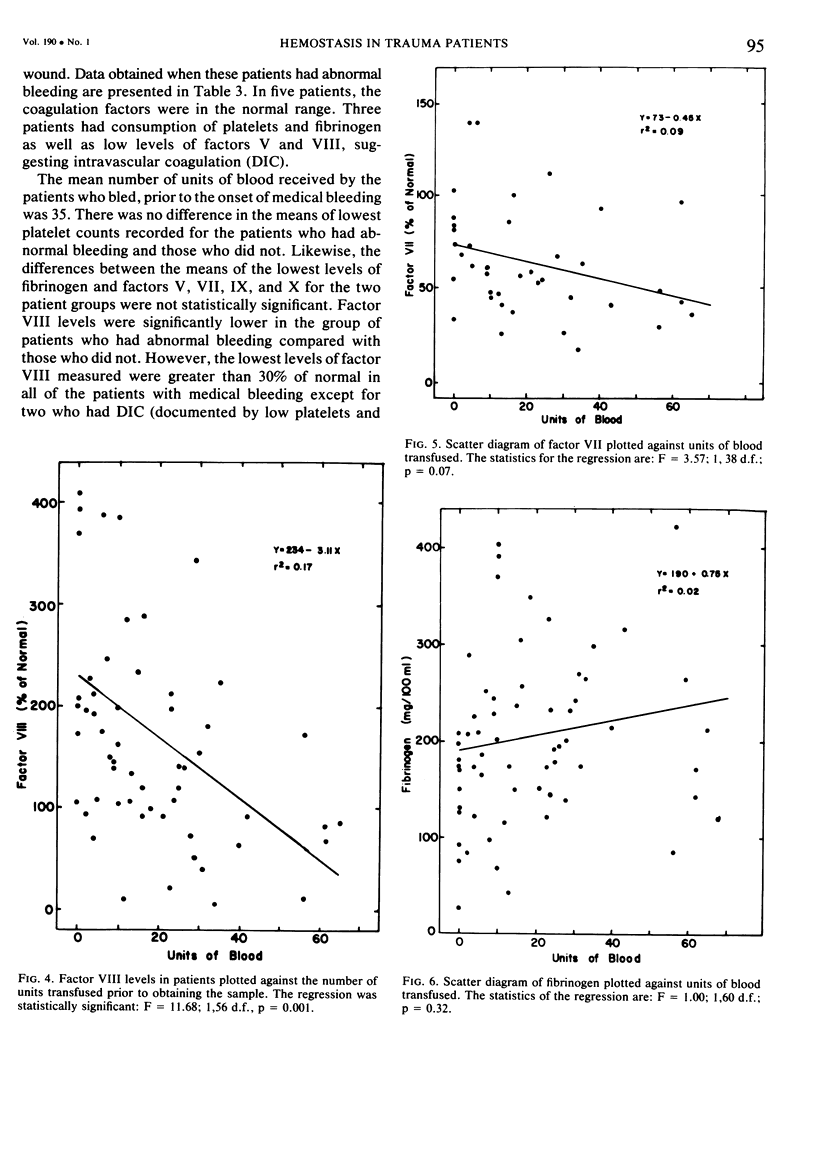
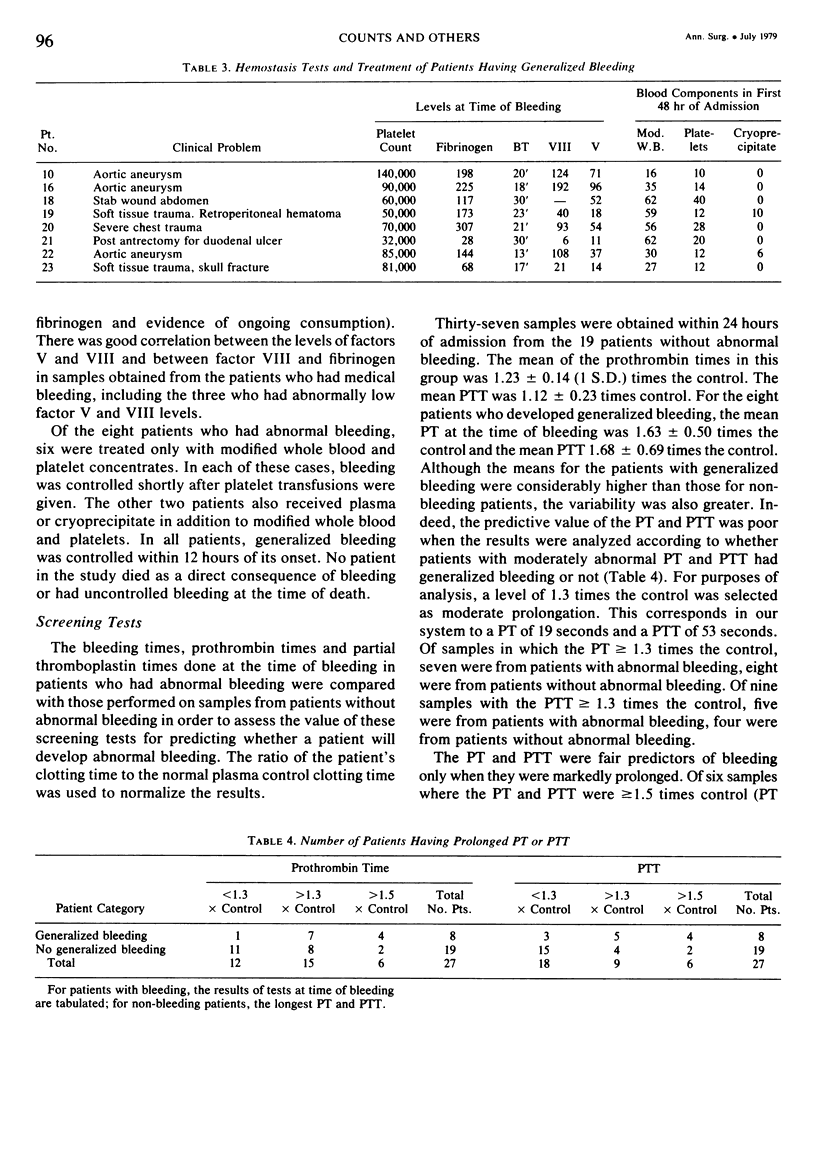
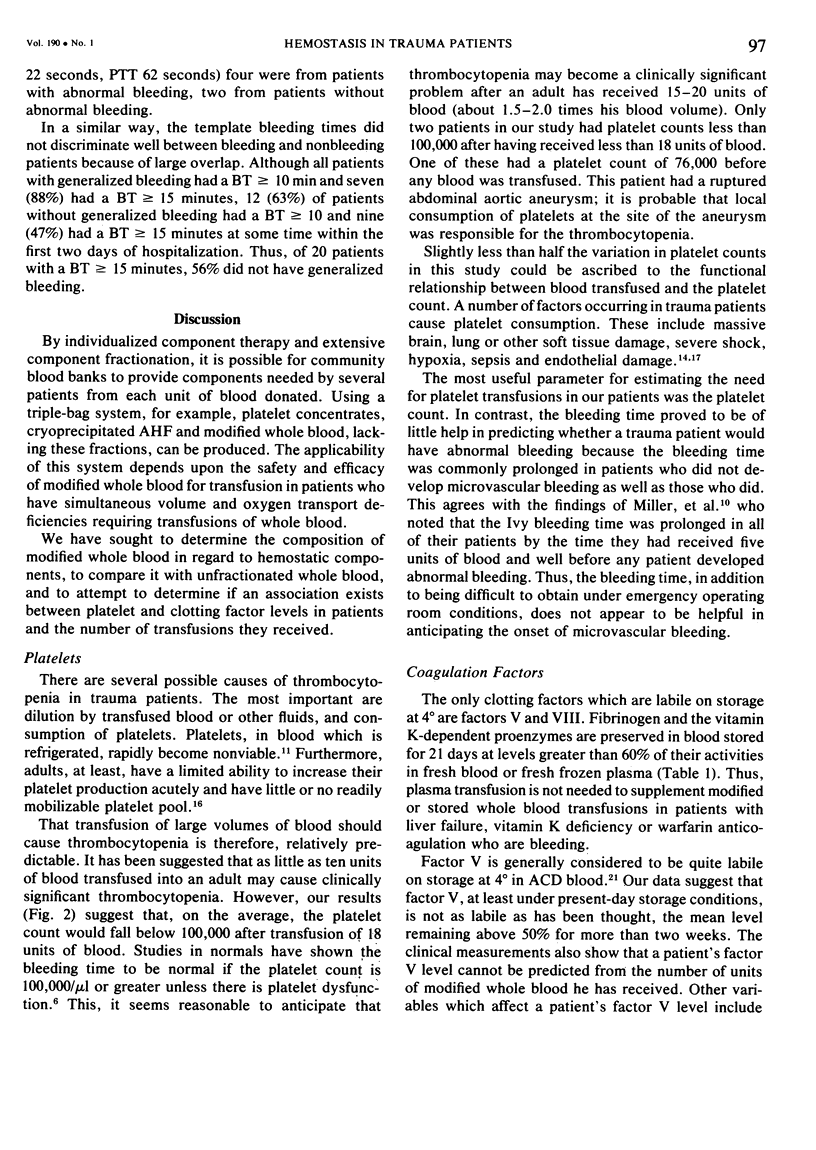


Selected References
These references are in PubMed. This may not be the complete list of references from this article.
- Bull B. S., Schneiderman M. A., Brecher G. Platelet counts with the Coulter counter. Am J Clin Pathol. 1965 Dec;44(6):678–688. doi: 10.1093/ajcp/44.6.678. [DOI] [PubMed] [Google Scholar]
- HALLEN A., NILSSON I. M. COAGULATION STUDIES IN LIVER DISEASE. Thromb Diath Haemorrh. 1964 Apr 15;11:51–63. [PubMed] [Google Scholar]
- Harker L. A., Slichter S. J. The bleeding time as a screening test for evaluation of platelet function. N Engl J Med. 1972 Jul 27;287(4):155–159. doi: 10.1056/NEJM197207272870401. [DOI] [PubMed] [Google Scholar]
- LANGDELL R. D., WAGNER R. H., BRINKHOUS K. M. Effect of antihemophilic factor on one-stage clotting tests; a presumptive test for hemophilia and a simple one-stage antihemophilic factor assy procedure. J Lab Clin Med. 1953 Apr;41(4):637–647. [PubMed] [Google Scholar]
- Lim R. C., Jr, Olcott C., 4th, Robinson A. J., Blaisdell F. W. Platelet response and coagulation changes following massive blood replacement. J Trauma. 1973 Jul;13(7):577–582. doi: 10.1097/00005373-197307000-00001. [DOI] [PubMed] [Google Scholar]
- Meade T. W., North W. R., Chakrabarti R., Haines A. P., Stirling Y. Population-based distributions of haemostatic variables. Br Med Bull. 1977 Sep;33(3):283–288. doi: 10.1093/oxfordjournals.bmb.a071448. [DOI] [PubMed] [Google Scholar]
- Miller R. D., Robbins T. O., Tong M. J., Barton S. L. Coagulation defects associated with massive blood transfusions. Ann Surg. 1971 Nov;174(5):794–801. doi: 10.1097/00000658-197111000-00010. [DOI] [PMC free article] [PubMed] [Google Scholar]
- Murphy S., Gardner F. H. Effect of storage temperature on maintenance of platelet viability--deleterious effect of refrigerated storage. N Engl J Med. 1969 May 15;280(20):1094–1098. doi: 10.1056/NEJM196905152802004. [DOI] [PubMed] [Google Scholar]
- PROCTOR R. R., RAPAPORT S. I. The partial thromboplastin time with kaolin. A simple screening test for first stage plasma clotting factor deficiencies. Am J Clin Pathol. 1961 Sep;36:212–219. doi: 10.1093/ajcp/36.3.212. [DOI] [PubMed] [Google Scholar]
- Sheldon G. F., Lim R. C., Blaisdell F. W. The use of fresh blood in the treatment of critically injured patients. J Trauma. 1975 Aug;15(8):670–677. doi: 10.1097/00005373-197508000-00008. [DOI] [PubMed] [Google Scholar]
- Shulman N. R., Watkins S. P., Jr, Itscoitz S. B., Students A. B. Evidence that the spleen retains the youngest and hemostatically most effective platelets. Trans Assoc Am Physicians. 1968;81:302–313. [PubMed] [Google Scholar]
- Simmons R. L., Collins J. A., Heisterkamp C. A., Mills D. E., Andren R., Phillips L. L. Coagulation disorders in combat casualties. I. Acute changes after wounding. II. Effects of massive transfusion. 3. Post-resuscitative changes. Ann Surg. 1969 Apr;169(4):455–482. doi: 10.1097/00000658-196904000-00001. [DOI] [PMC free article] [PubMed] [Google Scholar]
- Slichter S. J., Counts R. B., Henderson R., Harker L. A. Preparation of cryoprecipitated factor VIII concentrates. Transfusion. 1976 Nov-Dec;16(6):616–626. doi: 10.1046/j.1537-2995.1976.16677060245.x. [DOI] [PubMed] [Google Scholar]
- Slichter S. J., Harker L. A. Preparation and storage of platelet concentrates. I. Factors influencing the harvest of viable platelets from whole blood. Br J Haematol. 1976 Nov;34(3):395–402. doi: 10.1111/j.1365-2141.1976.tb03586.x. [DOI] [PubMed] [Google Scholar]
- Urbaniak S. J., Cash J. D. Blood replacement therapy. Br Med Bull. 1977 Sep;33(3):273–282. doi: 10.1093/oxfordjournals.bmb.a071447. [DOI] [PubMed] [Google Scholar]
- Wilson R. F., Mammen E., Walt A. J. Eight years of experience with massive blood transfusions. J Trauma. 1971 Apr;11(4):275–285. doi: 10.1097/00005373-197104000-00001. [DOI] [PubMed] [Google Scholar]


